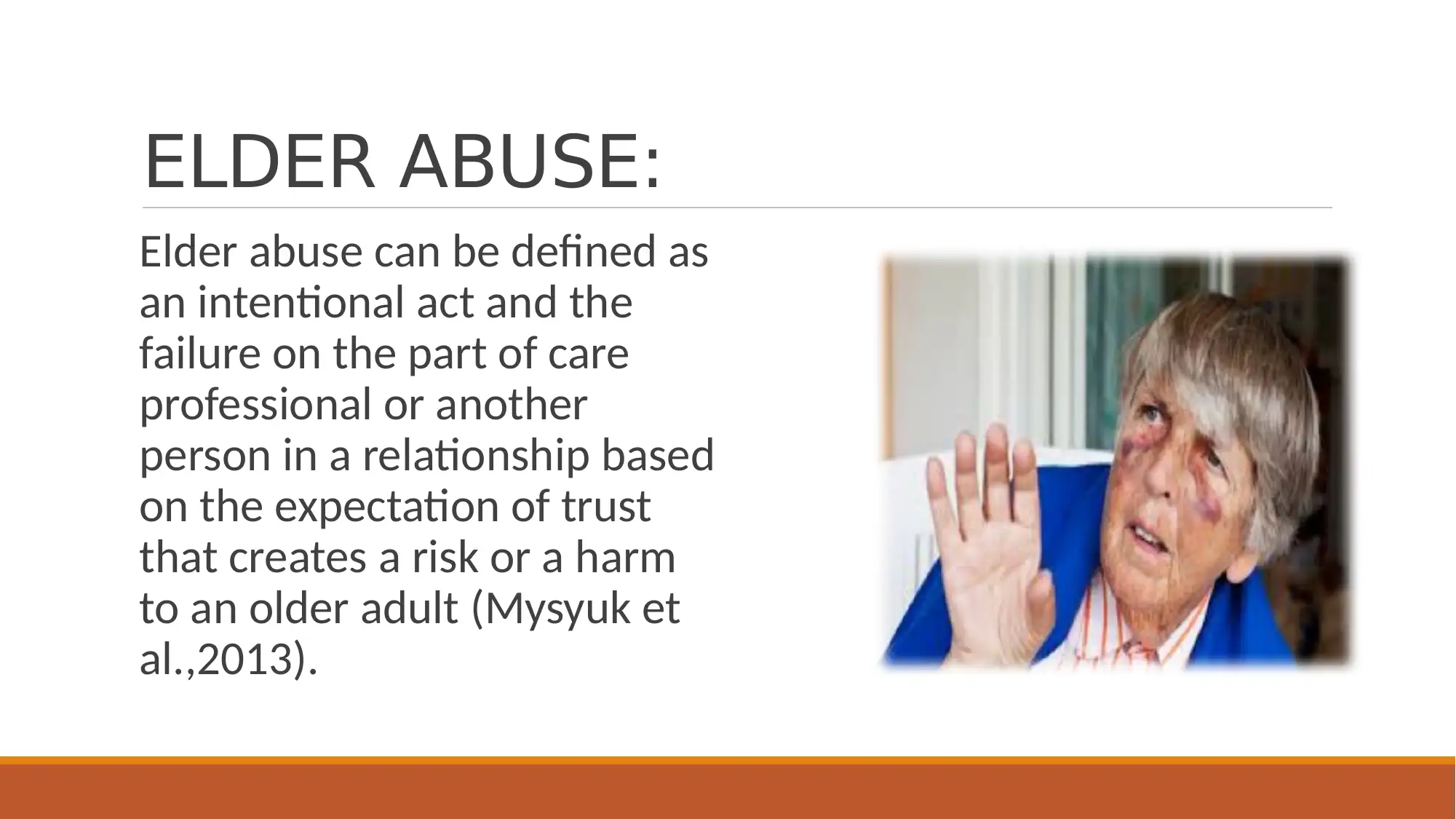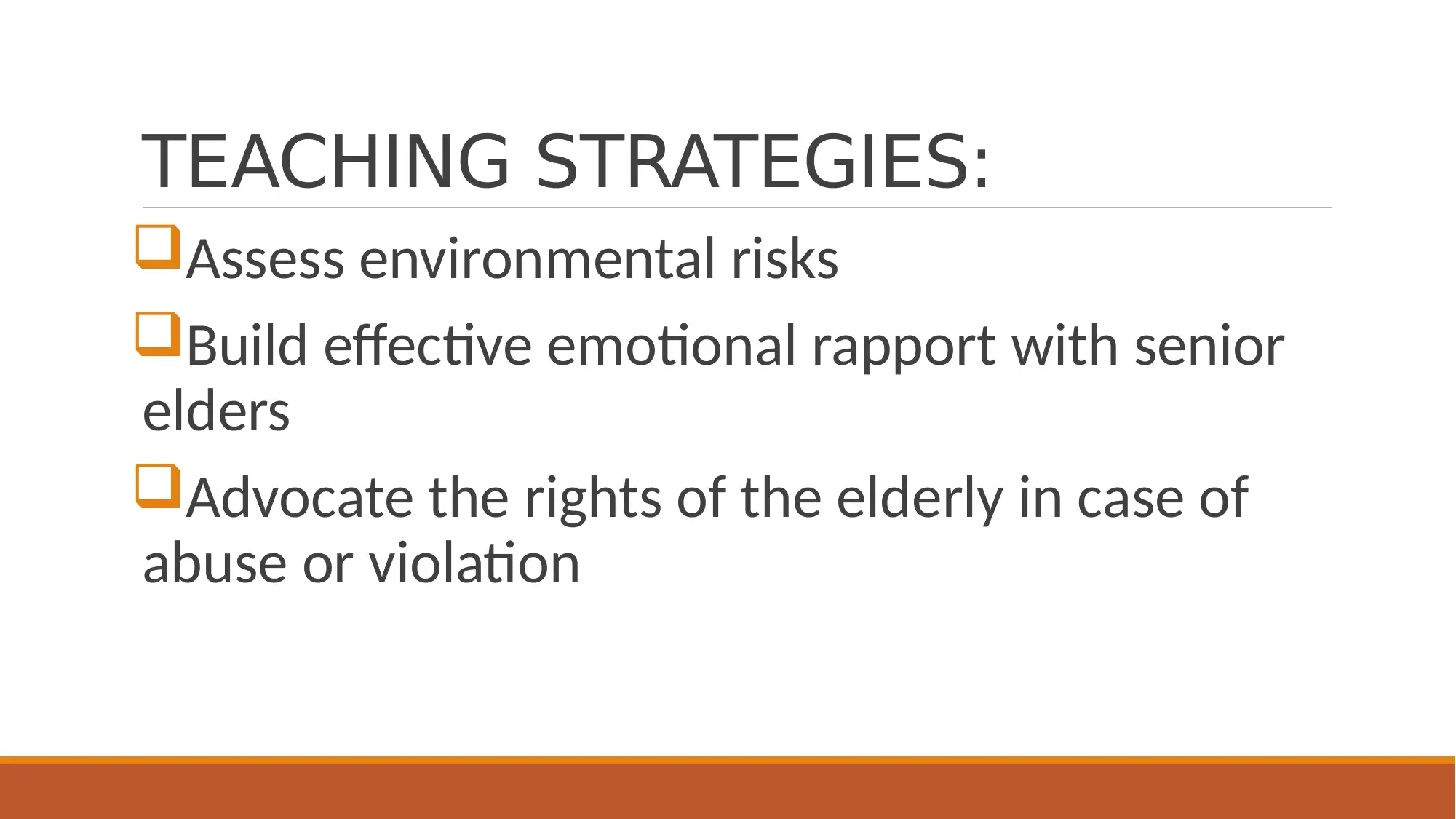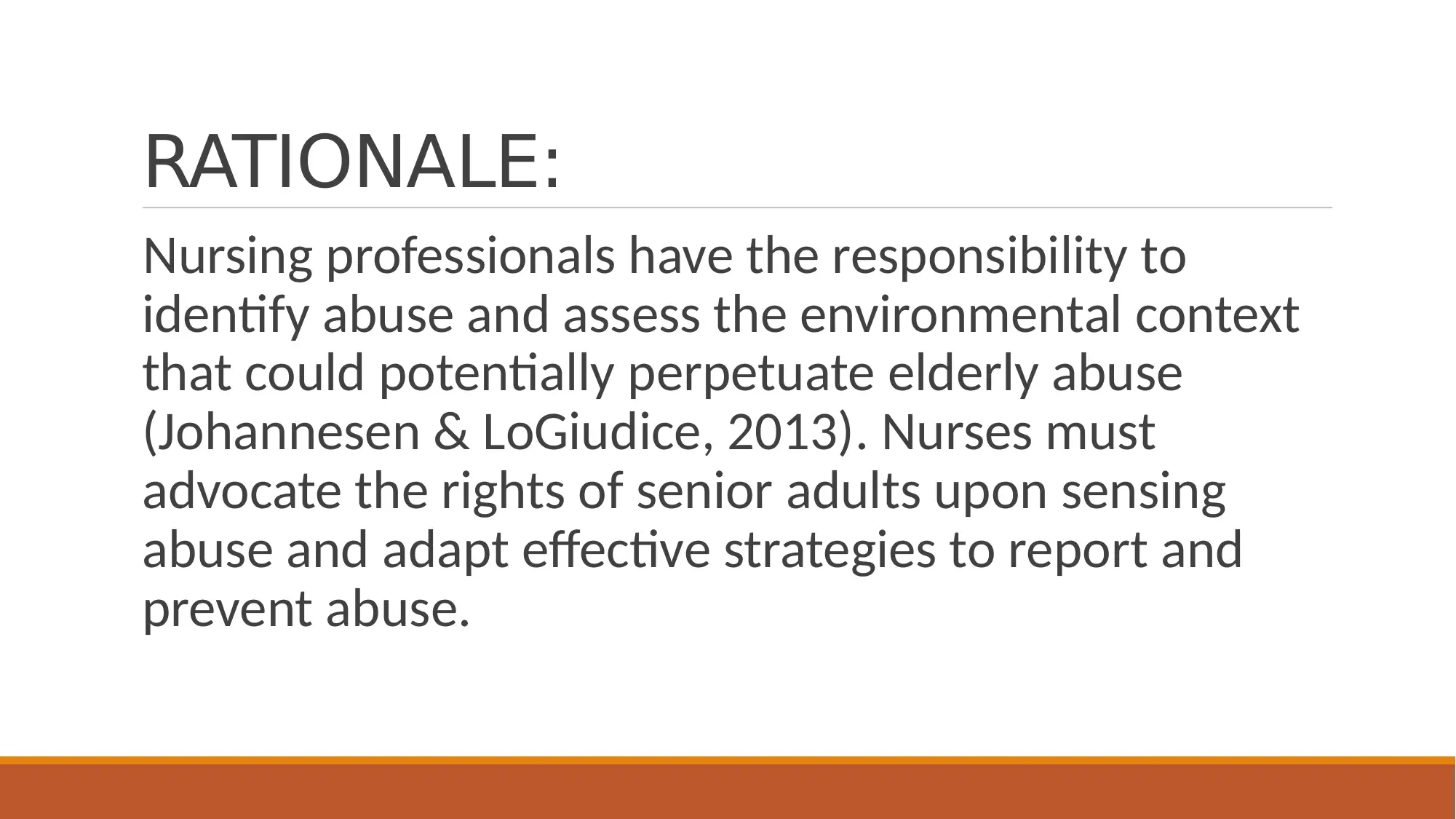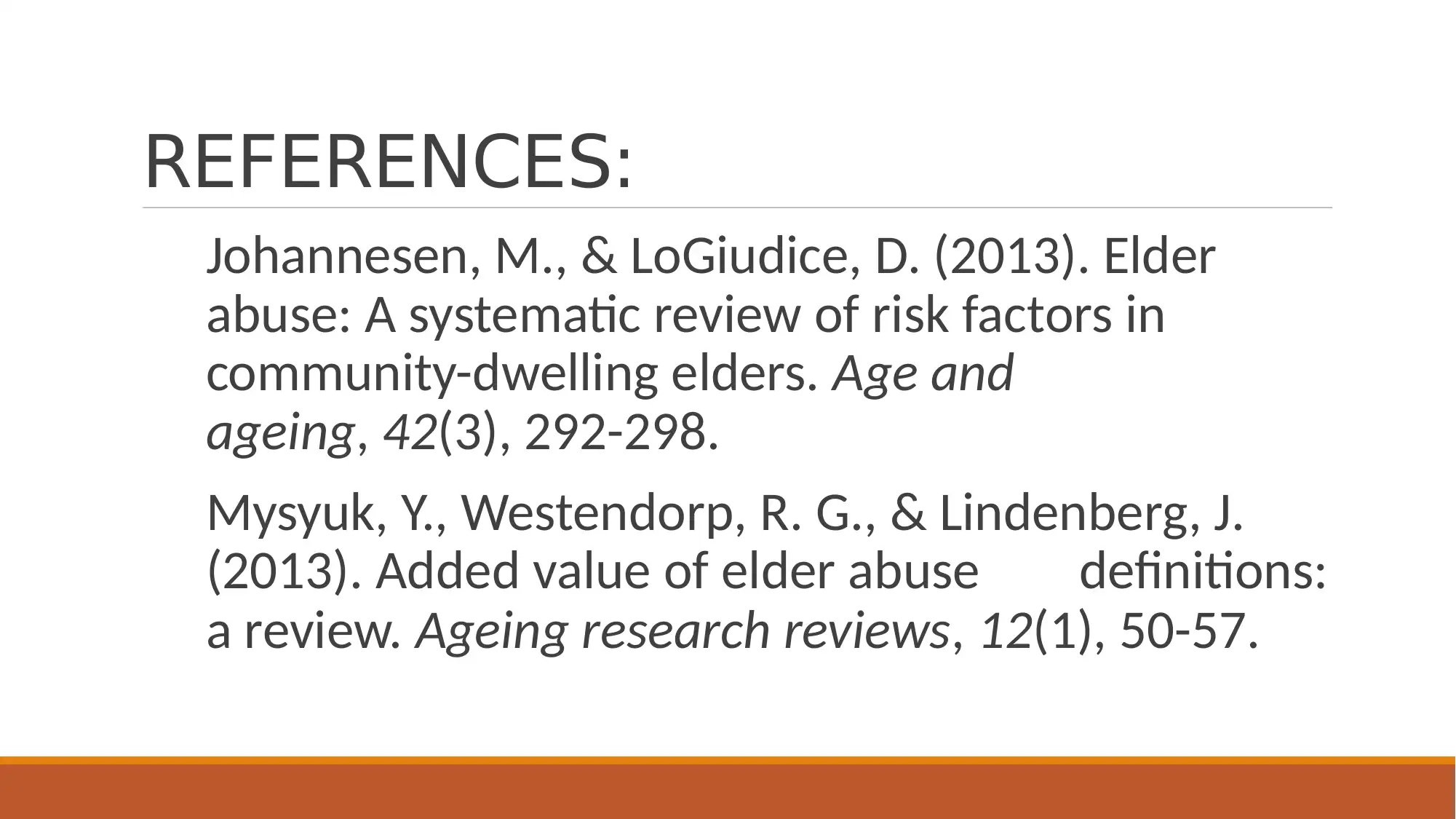Elder Abuse: Signs, Symptoms, and Reporting Strategies
VerifiedAdded on 2023/01/16
|8
|303
|76
Presentation
AI Summary
This presentation, designed for a nursing course (NURBN3018), defines elder abuse as intentional harm or neglect by a caregiver. It identifies common locations where elder abuse occurs, including homes, family residences, and care facilities. The presentation emphasizes recognizing signs and symptoms, such as confusion, weight loss, sleep disturbances, and physical indicators like bruises and bedsores. It proposes teaching strategies for nurses, including assessing environmental risks, building emotional rapport with elders, and advocating for their rights. The rationale stresses nurses' responsibility to identify abuse, assess contributing factors, and implement effective reporting and prevention strategies. The presentation cites relevant research to support its content and concludes with a thank you. The presentation is designed for a peer teaching session and adheres to the marking criteria focused on clear goals, preparation, structure, and reflective critique, with an emphasis on group collaboration.
1 out of 8















![[object Object]](/_next/static/media/star-bottom.7253800d.svg)